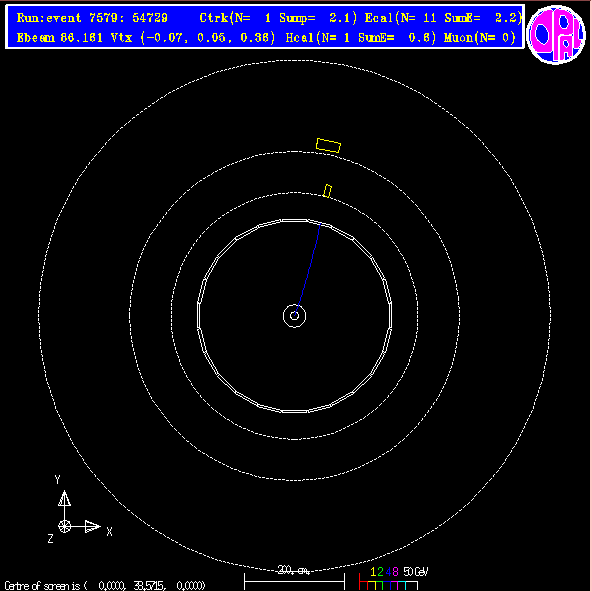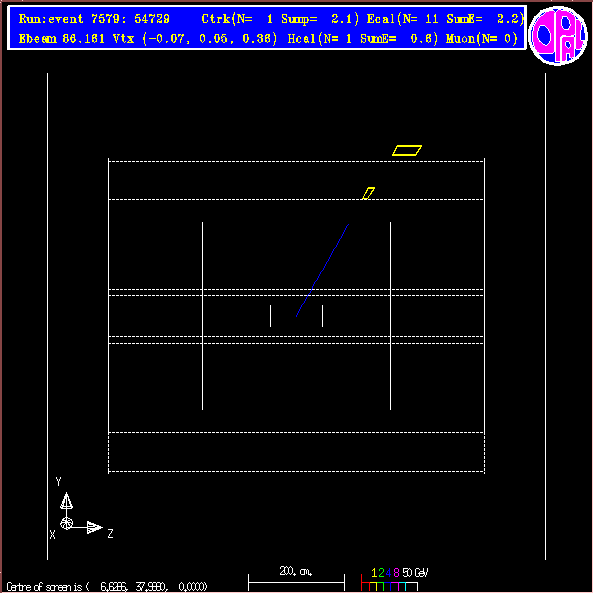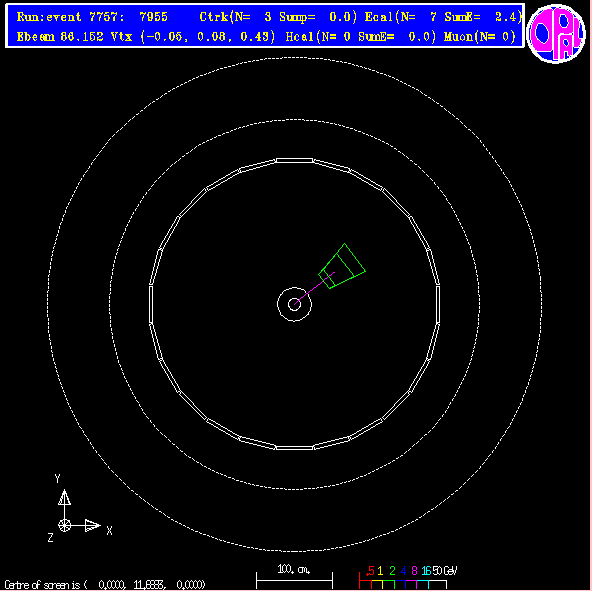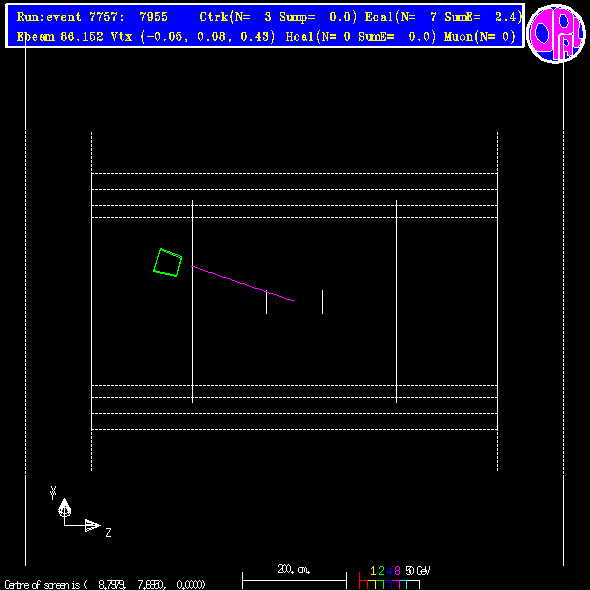
|
This hadron satisfies all three of the criteria given above. Please go through the three criteria one by one and verify this for yourself! Click here if you want some help with this.
Side View of Event

|

|
Side View of Event

|
This hadron satisfies only two of the three of the criteria given above. Do you understand which one does it not satisfy? Click here if you want some help.
Now you've understood the way we identify tracks produced by different
types of particles, please proceed to:
 Challenge I.
Challenge I.
 Description of the Detector.
Description of the Detector. Home Page
Home Page